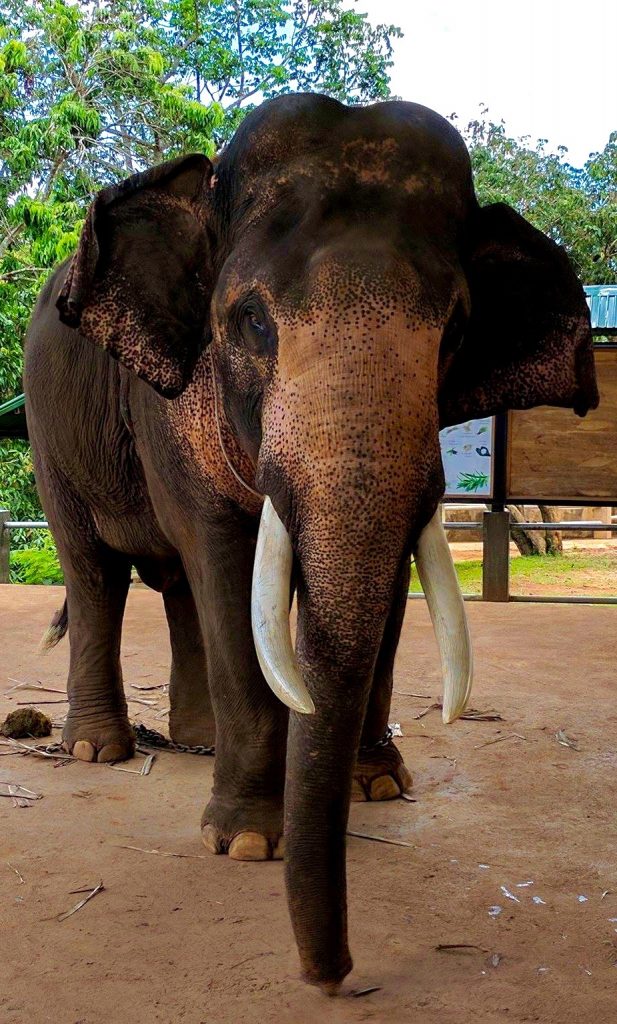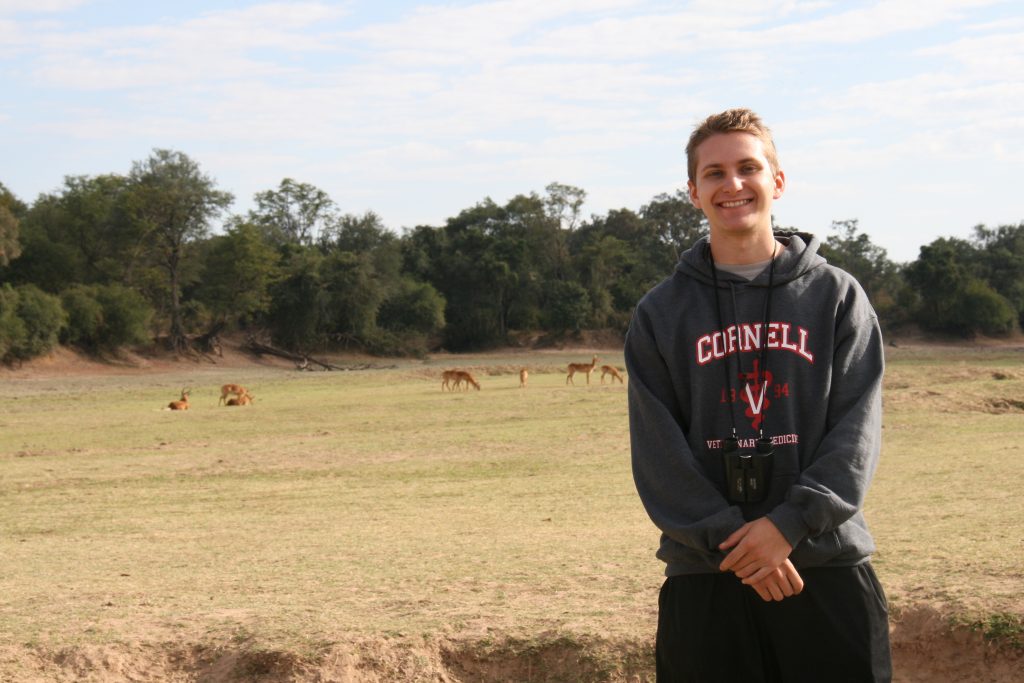A 50-year-old male elephant and his loving  mahout were trekking on the outskirts of a camp site when suddenly, the elephant collapsed to his death. Thankfully, this incident did not occur in front of any visitors, but the mahout was devastated nevertheless.
mahout were trekking on the outskirts of a camp site when suddenly, the elephant collapsed to his death. Thankfully, this incident did not occur in front of any visitors, but the mahout was devastated nevertheless.
Given the elephant’s unexpected death, both the mahout and the camp manager wanted answers by means of a necropsy. But when the animal weighs 8,000 pounds and his body lies motionless on a dirt path in the backwoods, how do we accomplish this? Clearly, this elephant was too large and heavy to transport back to the university’s necropsy lab to perform a postmortem examination. Thus, we packed all our equipment into the mobile clinic van and traveled nearly two hours to prepare for our on-site necropsy.
When we arrived, we saw three monks circled around the elephant in prayer. Platters of food were laid painstakingly on the ground, as the monks continued their intimate ceremony in a cloud of incense. This cultural custom involves blessing the deceased elephant in order to send its spirits into the sky. During this time, the mahout gave us a medical history of his elephant, who exhibited no clinical signs prior to his death.
The process of a field necropsy is a very laborious task. Since we had no leading hypotheses about the potential cause of death, we needed to conduct an especially thorough postmortem investigation and take multiple tissue samples from various organs. The procedure would surely take us upwards of 10 hours.
Before beginning the necropsy, we first had to scout out a burial site. Fortunately, we spotted a towering tree 15 feet away. We recruited two excavator trucks to commence digging at the ground underneath. The grave needed to be several meters deep so that the elephant’s remains could be contained in a non-biohazardous manner, unlikely to get uncovered and consumed by wandering pets or wild animals. As I started putting on personal protective equipment, metal claw hands began to scrape into a ground baked hard from the Thai sun.
As the trucks continued pounding into the dirt, a tractor arrived with several motorbikes in tow, bearing chains and tarps. The tarp was laid out on the ground, where we placed our tools and organized a makeshift instrument station on its surface. At the moment, the elephant was located under an intensely hot sun, 15 feet away from the grave still being dug beside the tree. In addition, his body was currently twisted due to the way he collapsed onto the ground. Somehow, we had to both relocate him next to his shaded burial site and re-position his body into proper lateral recumbency.
That’s where the long, thick chains came into play. The chains were tied around the elephant’s limbs at one end, hurled over the tree, then connected to the rears of the motorbikes and tractor at the other end, effectively fashioning a pulley system. In unison, the tractor and motorbikes revved their engines, slowly dragging the elephant’s body inch by inch. After a few minutes of hoisting the elephant along, the tractor’s engine suddenly broke down from the heavy load, at which point they brought in a separate heavy-duty vehicle and maneuvered its crane to help nudge the elephant forward as the motorbikes continued to pull.
Once the grave was dug and the elephant was finally placed in proper position, we were ready to begin the dissection. However, all the prep work itself took roughly four hours. As storm clouds loomed in the distance, the vets and pathologists promptly took their sharpened knives and began their investigation. Plastic rope was threaded through the rim of the elephant’s skin flap so it could be reflected as they sliced through the lateral fascia. As the dissection progressed, the chains were used once again to help lift the limbs for inspection and eventual removal from the elephant carcass.
Tissue samples were handed to me to be photographed, measured, and labeled. I diligently noted gross findings as they were hollered from the vets, who were knelt down in the disemboweled abdominal cavity as they extended their hands deep into the lungs and heart.
Midway, the necropsy became a race against time when a thunderstorm descended upon us. I peered up at the tree, debating whether standing beneath it would shelter me from the downpour or electrocute me from the lightning. The camp owner’s car was parked nearby, and we rummaged through his trunk to find some rain ponchos and mini beach umbrellas. I set up shop on a plot of soil away from the tree, taking refuge under the umbrella as I waited to log in our next tissue sample.
The entire team relentlessly continued to work their way through the elephant carcass. After emerging from the body completely soaked (and not just from the rain, mind you), the vets concluded they had obtained all the necessary samples. The elephant—considerably lighter after being compartmentalized—could now be moved more easily. The crane gently goaded the carcass into the grave and scooped up the previously exhumed dirt to bury its remains. Lastly, we covered the burial site with a layer of limestone powder to help maintain the pH of the soil after the body disintegrates.
Performing an elephant field necropsy is one of the wildest veterinary procedures I have ever experienced. It combines protocol and sheer creativity, is somewhat unorthodox, and requires a concerted effort from 25 people. When resources are limited, time is tight, and logistics are threatened by weather, you can count on veterinary ingenuity and teamwork to get the job done.
Read Part 1 of The Elephant Diaries Here.
Read Part 3 of The Elephant Diaries here.
This post is written by Elvina Yau and was originally published on her WordPress blog, Elvina the Explorer, on July 26, 2017.




